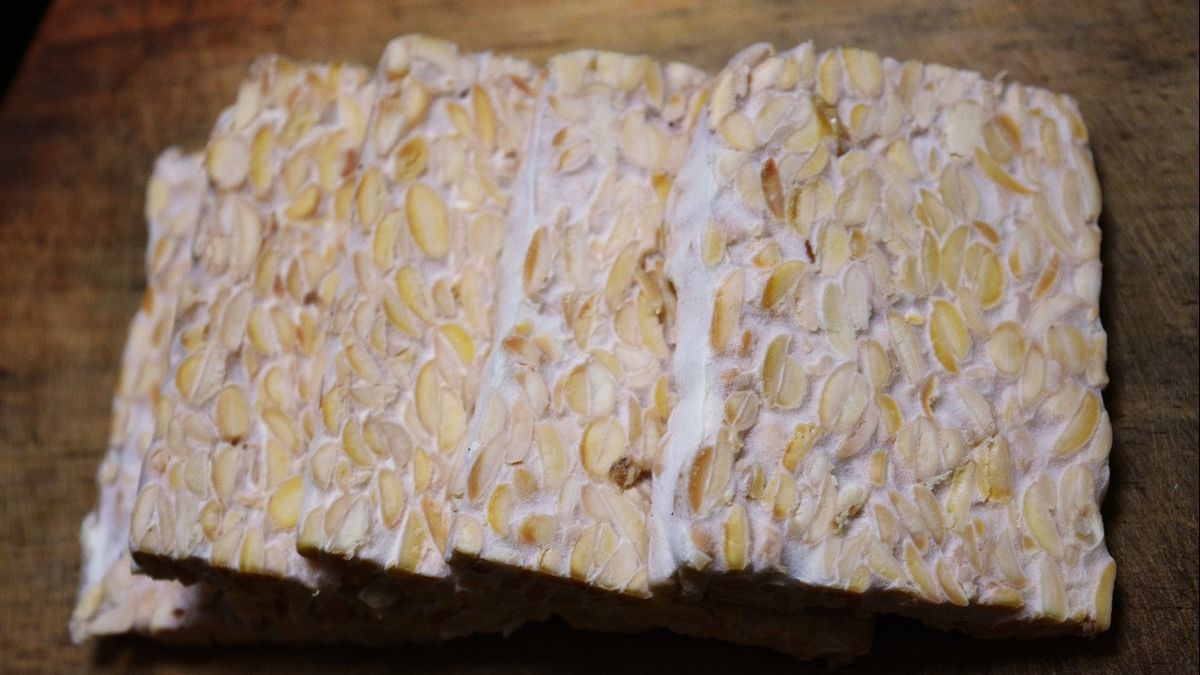YOGYAKARTA Indonesia's most common fermented food and easy to find is tempeh. This food is made from soybeans fermented with yeast.
Tempe has been known to the people of Java for centuries. As stated in the Centhini Fiber which was written in the 19th century.
The manuscript is described in approximately five volumes out of a total of 12 volumes of Centhini Fiber.
In the Centhini Serat, there is a script that tells of tempeh chilies, fried tempeh, and tempeh bacem.
In addition, in the manuscript there is also a raw tempeh story that is told to be eaten with accretion and chili sauce made from coconut stomach.
Summarized from various sources, here are a series of Indonesian fermented foods other than tempeh.
Cassava is a snack made from cassava or cassava. Cassava that can be processed into tapai is a sweet cassava that is white or yellow.
The process of fermentating wood sweet potatoes into tapai is usually carried out in bamboo baskets that are covered with banana leaves and fermented at room temperature for two to five days.
Peuyeum is a food similar to cassava. Peuyeum and cassava are both splashed from wood sweet potatoes.
In making the peuyeum, the cassava is left intact, only the base and ends are cut off, then peeled. After washing and soaking for a while, the whole wood sweet potatoes are then boiled until half cook.
Half cook means it's ready to eat, but it's not really soft and hasn't broken yet.
For the fermentation process, the entire half-baked cassava surface is covered with yeast.
Brem is a fermented food that is often used as a hand. This traditional snack comes from Madiun and Wonogiri.
Brem has a solid texture and melts when it is in the mouth. Brem has a sweet taste and a tone of the sensation blows up when it hits the tongue.
This typical Indonesian fermented food is made from glutinous rice or glutinous tapai water fermented with yeast. The fermentation process will create a distinctive brem taste.
Tauco is one of the soybean fermented products. Bumbu has a distinctive taste that is very widely known from the northern tip of Sumatra to the entire island of Java. Tauco's popularity even reached Kalimantan, Sulawesi, and other islands.
The fermentation process on the basic ingredients of the tauco maker produces the right taste, color, aroma, and texture for food seasonings.
اقرأ أيضا:
This one Indonesian fermented food comes from Tanah Sundanese. The oncom fermentation process is obtained from the kamang mixture, which is mixed with the rest of the peanut mangki, tofu grounds, or fermented coconut grounds to the spora stage.
Oncom is estimated to have been consumed by the people of West Java since the 17th century.
Dadiah is a typical Minangkabau food made from fermented buffalo milk. The fermentation process is carried out in bamboo covered with banana leaves. Dadiah can also be called Minang soil version yogurt.
The fermented dadiah process takes up to two days. Dadiah is ready to be eaten if it is compact. Dadiah is generally enjoyed with ampiang.
Calo is a fermented food made from calo shrimp or shrimp rebon. This dish is very popular in Bangka Belitung.
Rebon shrimp is fermented using sugar and salt and stored in a closed container. Brokers are often used as chili copolan for grilled fish.
This is information about Indonesian fermented foods. Hopefully this article can add insight to the loyal readers of VOI.ID.
The English, Chinese, Japanese, Arabic, and French versions are automatically generated by the AI. So there may still be inaccuracies in translating, please always see Indonesian as our main language. (system supported by DigitalSiber.id)

















